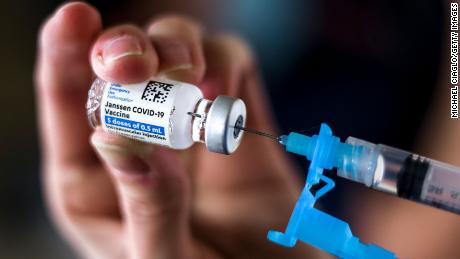Record Covid-19 vaccinations don’t mean it’s time to relax, officials say
At a briefing Friday, the White House’s Covid-19 response co-ordinator Jeff Zients said that 71% of individuals 65 and older had received at least one vaccination dose and that by mid-April about half of states will have opened up eligibility to all adults.
But Zients cautioned that the fight wasn’t over.
“It’s clear there is a case for optimism. But there is not a case for relaxation. This is not the time to let down our guard,” he said. “We need to follow the public health guidance: wear a mask, socially distance and get a vaccine when it’s your turn.”
On Friday, it reported 80,684 new cases and 1,265 new deaths.
‘Deeply concerned about trajectory’
Dr. Rochelle Walensky, director of the Centers for Disease Control and Prevention, warned that Covid cases in the United States have been rising.
“The most recent seven-day average is about 57,000 cases per day, which is an increase of 7% from the prior seven days,” she said. Hospitalizations had also slightly increased and the seven-day average of Covid-19 fatalities “continues to hover at 1,000 deaths per day.”
“I remain deeply concerned about this trajectory. We have seen cases and hospital admissions move from historic declines, to stagnation, to increases. And we know from prior surges that if we don’t control things now there is a real potential for the epidemic curve to soar again,” Walensky said.
“Please, take this moment very seriously. We’re vaccinating at 2.5 million people a day and they are protected from Covid,” she said. “We can turn this around but it will take all of us working together. Please keep wearing your well-fitting mask and taking the public health actions now that we know that can reverse these concerning trends.”
Walensky said she knew that people were tired but it would be a little longer before mitigation measures could be relaxed.
“Our advice is clear, we’re vaccinating really, really quickly and we’re just asking people to hang on a little while longer in terms of the masks and the mitigation strategies so that we can get the majority of people vaccinated,” she said.”We just want to make sure that we don’t end up in a surge that truly is avoidable.”
‘People are starting to pull back’
That’s about 3.38 million more than Thursday and marked a new daily record. The seven-day average also hit a record of more than 2.6 million doses per day.
About 27% of the population — nearly 90 million people — have received at least one dose of vaccine, and 14.7% of the population — nearly 49 million people — are fully vaccinated.
Zients told the White House briefing that the administration expects Johnson & Johnson to meet its goal to deliver 20 million coronavirus vaccines by the end of March.
“We’ve done a lot to help J&J. We’re monitoring that very closely, and we anticipate a significant increase at the end of this month, which will enable them to hit at least 20 million doses,” Zients said.
Asked if the vaccine roll-out was fast enough, CNN chief medical correspondent Sanjay Gupta told Don Lemon on “CNN Tonight” that the Covid-19 vaccination drive was “the fastest vaccination project that we have ever seen.”
“It’s really quite extraordinary for what it is,” he said. “But at the same time, cases may go up in certain places — not because of not vaccinating fast enough — but because people are starting to pull back.”
Gupta said that a lot of Americans were “looking at this thing in the rear-view mirror at this point.”
“It is been the same problem throughout this entire pandemic. We know what to do, we wait for science to rescue us. Science starts rescuing us, we start even pulling back further. That’s the real race,” he said.
“The vaccines are really important and it’s great that they’re speeding up but we’ve got hang in a little bit longer.”
Variant spreading
“Our percent of the variants is a little bit lagging behind our data because it takes a while to do the sequences and to sequence the variants and do that population-based analysis. But, yes, we’re worried about the increase,” she said.
Dr. Anthony Fauci, director of the National Institute of Allergy and Infectious Diseases, told the briefing that the variant appeared to be gaining ground.
“The issue is the dynamics of the increase are telling us that it’s going to continue to be a greater proportion. Because if you look from week-to-week B 1.1.7 becomes more of a percentage and as the percentage goes up, that’s a reflection that it has the capability to become dominant,” he said.
CNN’s Maggie Fox contributed to this report.
![]()








